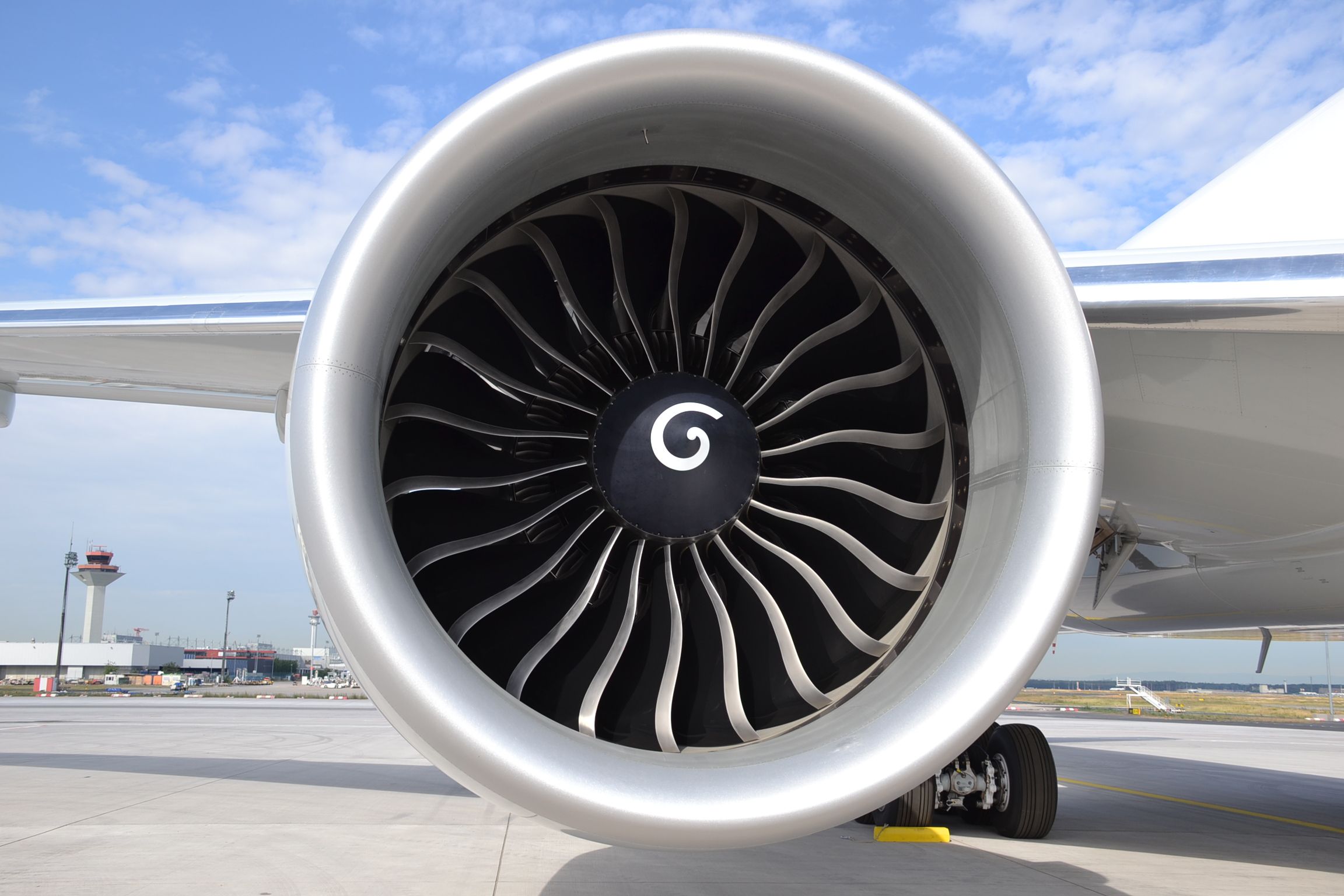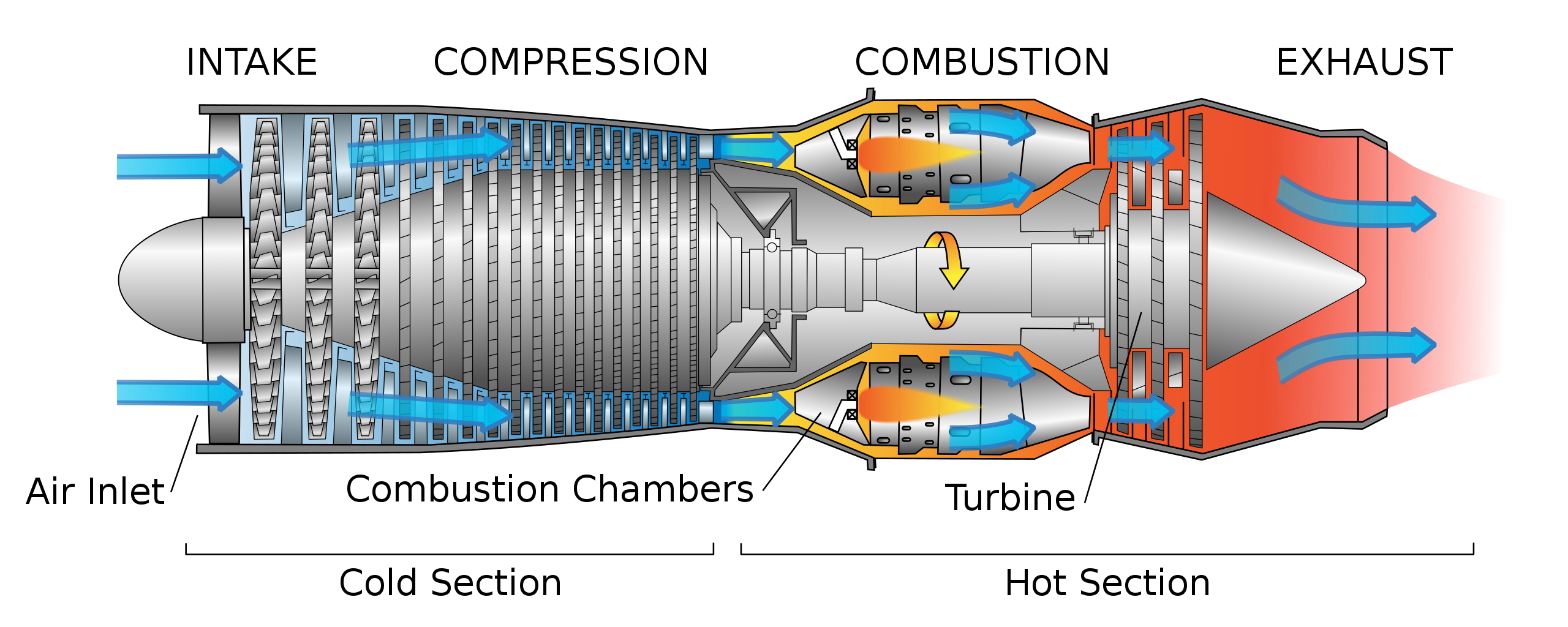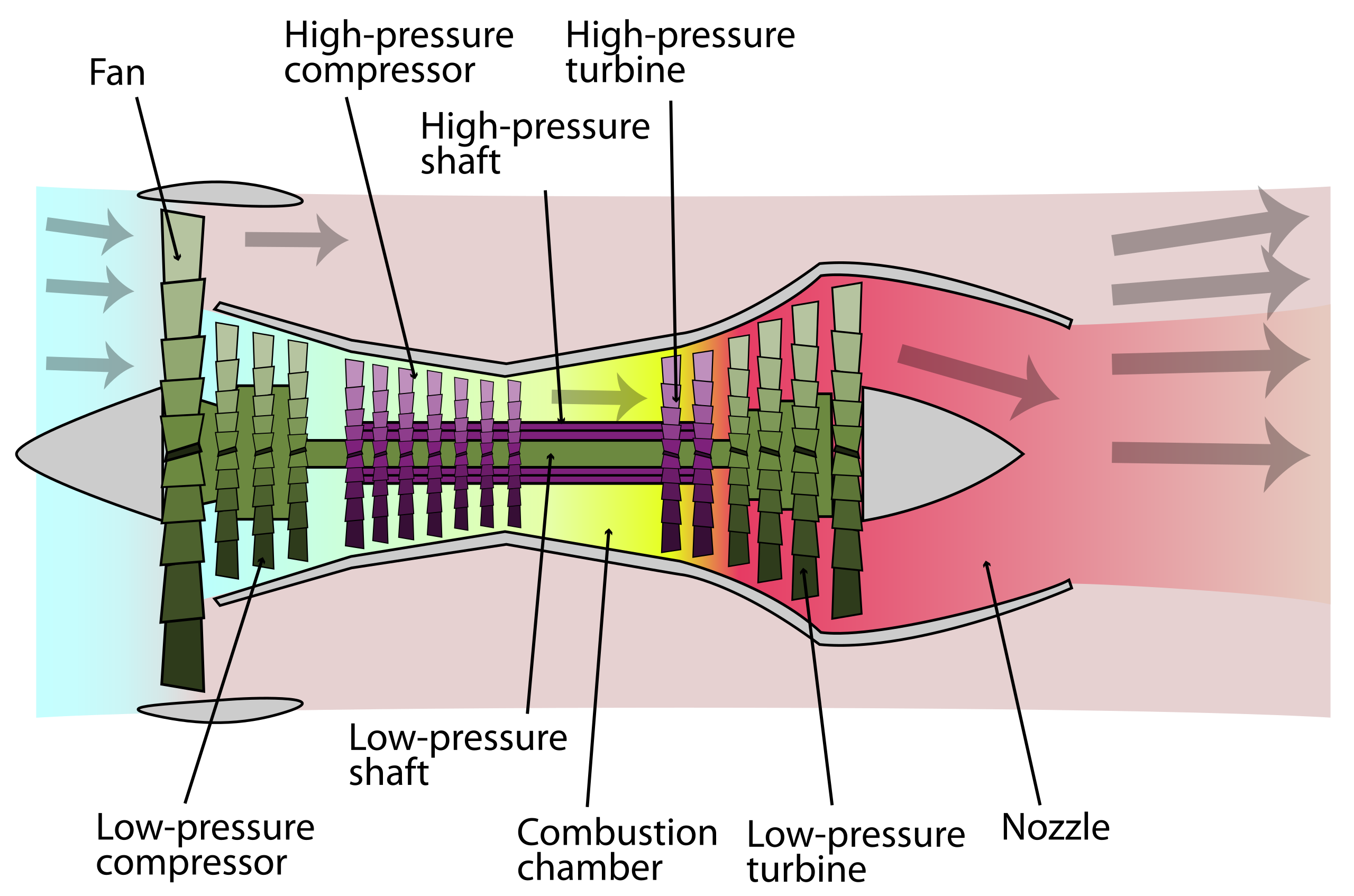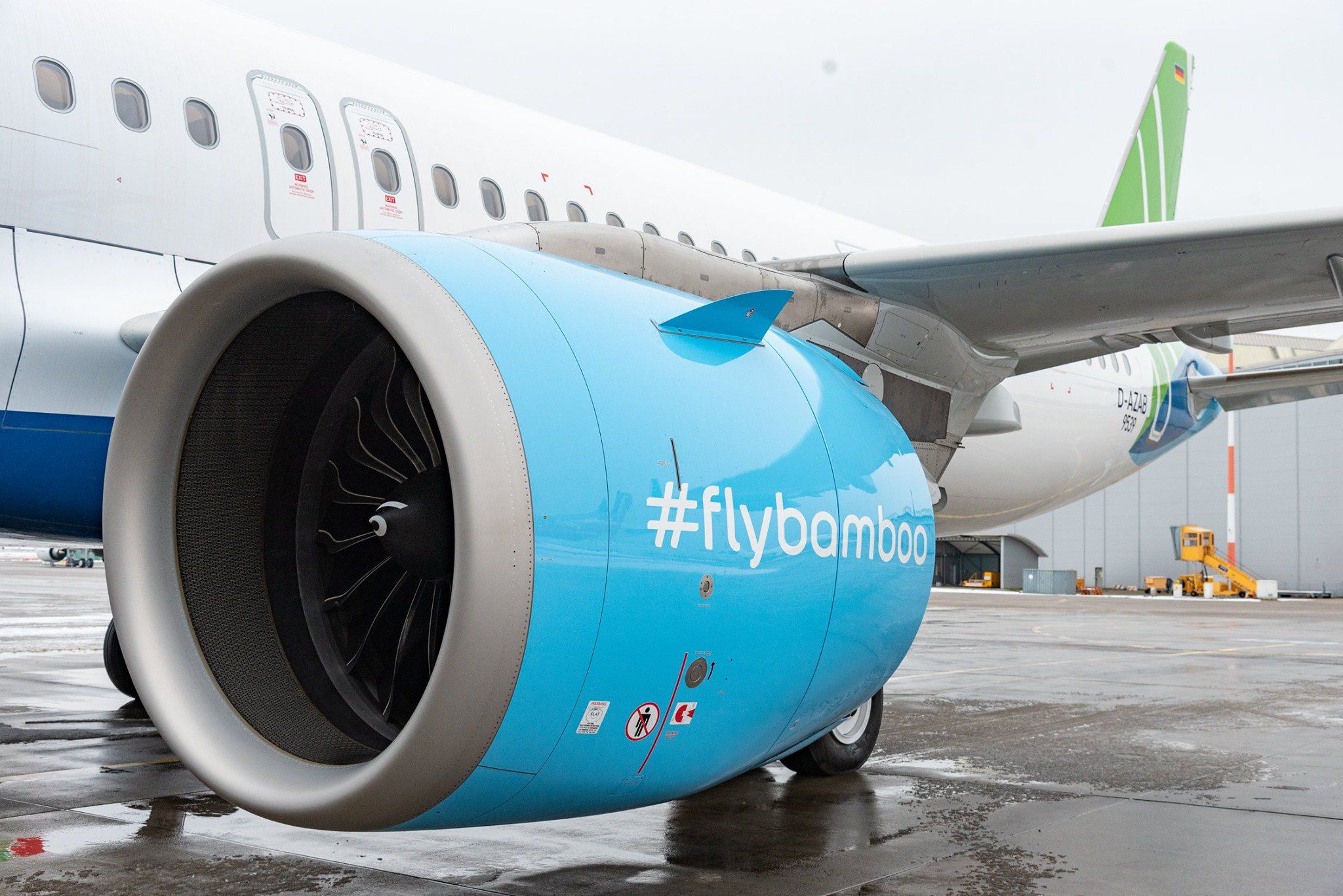In a conventional two-spool turbofan engine, a low-pressure shaft connects the fan, the low-pressure compressor, and the low-pressure turbine. A second (high-pressure) shaft connects the high-pressure compressor and the high-pressure turbine. The two shafts run concentrically at different speeds while increasing the overall efficiency of the engine.
Bypass ratio
Anyone who has flown on a modern jetliner must have seen a large fan at the front of the aircraft engines. Having a large fan at the inlet essentially makes the engine a high bypass ratio engine.
The bypass ratio is the ratio between the mass flow rate of the air bypassing the engine core (secondary flow) to the mass flow rate of the air entering the core of the engine (primary flow).
For example, a 5:1 bypass ratio means that for every five units of the secondary airflow, one unit of the primary airflow enters the core. The primary airflow enters the compression section and gets combusted with fuel to provide power to the fan. As a result, the fan rotates and produces the majority of the thrust through the secondary (bypass) airflow.
Turbojet engines
In a typical turbojet engine, all the incoming air passes through the core of the engine before being used for combustion and expansion. While the incoming flow of air has to remain at subsonic speeds, the turbojet design is ideal for supersonic aircraft.
Such engines have very high fuel consumption and are very loud. Moreover, the engine performance decreases significantly at low speeds due to the loss of airflow within the system.
Turbofan engines
The subsonic speeds at which commercial airliners fly call for improved fuel efficiency at operating speeds. A turbofan design is much more suitable for subsonic speeds due to its ability to produce greater thrust through the ducted fan. In spite of being heavier than turbojets, turbofan engines are much more fuel efficient.
Since the low-pressure shaft (with the fan attached to it) rotates at a much lower speed than the high-pressure shaft, the specific fuel consumption and the noise levels remain low. Additionally, the (colder) bypass air cools the engine from the outside during operation.
The turbofan design allows for greater efficiency by directing only a small portion of the incoming air to be compressed and mixed with fuel for combustion. In large bypass ratio engines, approximately 10 - 20% of the incoming air enters the engine core, while 80 - 90% of the air bypasses the engine core while adding to the total thrust produced by the engine.
The CFM International LEAP-1A engine, which powers the A320neo family of aircraft, has an impressive 11:1 bypass ratio. As such, approximately 9% of the air is compressed and used for combustion, while the remaining 91% travels rearward through the bypass stream.
Geared turbofan engines
Engines with very high bypass ratios tend to be more efficient in terms of specific fuel consumption due to their ability to use minimal air for expansion. Within the low-pressure system, the tip speed of the fan increases relative to the speed of the low-pressure turbine blades.
In a geared turbofan design, a planetary reduction gearbox is used in the low-pressure system between the fan and the shaft. The gearbox maintains the fan tip speeds below supersonic levels while keeping the overall fuel efficiency at an acceptable level.
Have you noticed a large fan at the inlet of a commercial jet engine? Tell us in the comments section.


.jpg)


